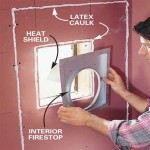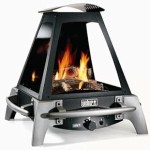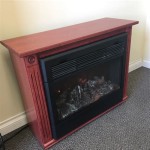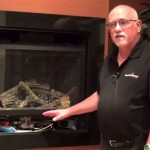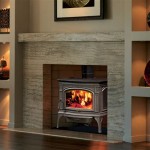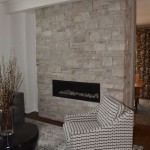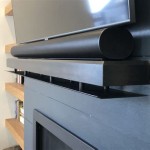Installing Gas Fireplace Flue: Essential Aspects
Installing a gas fireplace flue is a crucial task that ensures the safe and efficient operation of your gas fireplace. This guide will provide you with a comprehensive overview of the essential aspects of gas fireplace flue installation, empowering you to confidently tackle this project.
### Importance of a Proper FlueA flue is a vertical passage that allows combustion gases and smoke to be vented safely away from the house. A properly installed flue ensures:
- Efficient removal of harmful gases
- Prevention of backdrafting, which can introduce carbon monoxide into the home
- Proper airflow, which supports combustion and prevents sooting
There are two primary types of gas fireplace flues:
- Metal flues: Constructed from stainless steel or aluminum, metal flues are commonly used in new installations. They offer durability, resistance to corrosion, and flexibility in routing.
- Masonry flues: Built from fire-resistant materials like brick or clay, masonry flues are typically found in existing homes. They require proper inspection and maintenance to ensure integrity.
The size of the flue is crucial for proper ventilation. Consult the fireplace manufacturer's instructions to determine the required flue diameter. A too-small flue can restrict airflow, leading to inefficiencies and potential hazards, while a too-large flue can allow excessive heat loss.
### Installation ConsiderationsSeveral key considerations must be taken into account during installation:
- Chimney clearance: The flue must be installed with the proper clearance from combustible materials.
- Draft hood: A draft hood helps prevent backdrafting and ensures proper airflow.
- Termination point: The flue must terminate at least 2 feet above any roof obstruction.
- Venting configuration: Gas fireplaces can be vented horizontally through the wall or vertically through the roof.
Gas fireplace flue installation requires strict adherence to safety precautions:
- Turn off gas supply: Before starting any installation work, ensure that the gas supply to the fireplace is turned off.
- Wear protective gear: Use gloves, safety glasses, and a dust mask.
- Inspect existing flue: If installing in an existing flue, have it professionally inspected to ensure its suitability.
- Follow manufacturer's instructions: Carefully follow all instructions provided by the fireplace and flue manufacturer.
- Have the installation inspected: Once installed, it's highly recommended to have the flue and fireplace inspected by a qualified professional to ensure compliance with building codes and safety standards.
Installing a gas fireplace flue involves several essential aspects that must be carefully considered and executed. By understanding the importance of a proper flue, choosing the right size, following installation guidelines, and adhering to safety precautions, you can ensure the safe and efficient operation of your gas fireplace, enhancing both comfort and peace of mind.

If You Have A Gas Fireplace It May Or Not Chimney Flue

Enviro Quick Step Under Floor Flue Installation Heatmaster
Gas Fireplace Venting Explained Heat Glo

How To Install A Direct Vent Pipe

Enviro Quick Step Vertical Flue Installation Sheet Heatmaster

What Are The Best Ways To Vent A Gas Fireplace Zoroast
Gas Fireplace Venting Explained Heat Glo

Enviro Quick Step Horizontal Flue Installation Heatmaster

Venting A Gas Fireplace Through Existing Chimney Direct Vent Design

Fireplace Installation Full Service Chimney Serving Kansas City Area
Related Posts

